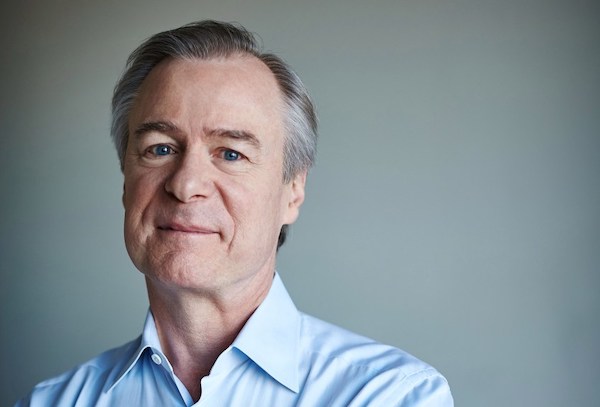Robertson leads Dallas Symphony in two 20th-century titans

David Robertson conducted the Dallas Symphony Orchestra in music of Stravinsky and Bernstein Thursday night.
Guest conductor David Robertson presented a thought-provoking and ultimately thrilling all-twentieth-century program with the Dallas Symphony Orchestra at Meyerson Symphony Center Thursday night. The orchestra and guest pianist Orli Shaham rose to impressive heights, and Robertson’s command of the forces at hand, the structure of the music, and the acoustical properties of the room was evident.
Robertson’s sequencing of the picks was in itself intriguing, with relatively early works of Stravinsky at the beginning and end, and Bernstein’s one-of-a-kind piano concerto/symphony hybrid in between. While this looked a bit odd on paper, the result was a concert highlighting central characteristics of each composer and the interrelationship of those two musical titans
Stravinsky’s short, flashy tone poem Fireworks — at five minutes the musical equivalent of a hundred-yard dash — opened the concert. Stravinsky, largely unknown at time (1909) and fresh from tutelage under Nikolai Rimsky-Korsakov, flexes his orchestration muscles, but goes his romantic forebears one better by magically creating the sense of the visual effects of fireworks via some almost astounding instrumental strategies. Robertson beautifully explored and exploited Stravinsky’s sonic effects, and had the orchestra with him every second.
Paired with the complete score of Stravinsky’s The Firebird as the other Bernstein bookend on Thursday, the compact “Fireworks” illuminated the young Stravinsky on the brink of international fame (and notoriety). Though tame alongside Petrushka and The Rite of Spring, which he composed soon after, The Firebird stepped up the exploration of orchestral music’s sonic and structural potential hinted at in “Fireworks.”
As a ballet score tied to a plot, The Firebird is sectional in structure and was, for many years, presented in concert as a shortened suite — one of three such edits that Stravinsky arranged for orchestras performing the work without the accompanying ballet.
Robertson followed the more recent trend of performing the entire 45-minute ballet score uncut, and demonstrated the knowhow and musical instincts to pull it off, essentially turning this episodic score into a convincingly unified symphonic work. Overhead captions describing the ballet’s action helped to communicate the meaning behind the relentlessly intense music.
Under Robertson’s baton, the musicians of the Dallas Symphony produced a nearly perfect reading of The Firebird’s constantly shifting textures, from the deliberately murky opening to the brilliantly triumphal final passage. The string section ranged from pastel lucidity to a rich, lush tone, and Robertson gently shaped the opening motif to set the stage for the fairy-tale adventure that follows.
The Firebird is also packed with isolated solo passages, and orchestra principals played them impressively, in particular David Cooper on French horn, flutist David Buck and clarinetist Gregory Raden. Robertson also placed brass players offstage, in the balconies, at key moments turning the concert room into a magnificent sound-surround experience.
One could feel, in this performance, Stravinsky pushing his heritage of late imperial Russian romanticism into the new century: the dance of the princesses could have been written by Rimsky-Korsakov or Borodin; the representations of the demon Koschei anticipate The Rite of Spring in its dissonance and percussiveness. Robertson, an elegant and efficient presence on the podium, held everything together handsomely, with tight control and husbanding of resources — a skill many of today’s conductors seem to have forgotten — to produce a heart-stopping final moment.
Between the two Stravinsky works, pianist Shaham joined the orchestra for Bernstein’s Symphony No. 2 for Piano and Orchestra, “The Age of Anxiety.” Named for W.H. Auden’s long, soul-searching poem of 1947, the work — also arriving with its young composer on the brink of stardom — contains almost a surplus of musical riches, with an innovative structure and an array of musical forms ranging from tone rows to jazz.
The opening movement uses that most obvious and, for audiences, understandable structural device, a set of variations, but cloaks the variations in deliberate obscurity. The second movement storms, rages, and mourns, with a long side journey into a jazz district. The orchestration as a whole is quite Stravinskian, with equal attention from Bernstein to beautiful sounds and striking effects. The composer ten years later of West Side Story is much in evidence here, though one couldn’t help wishing he had been more concise in this earlier work.
As always with Bernstein, the listener can sense the composer’s ego and presence in the music; Bernstein himself admitted that the symphony’s piano part was “autobiographical.” Shaham maneuvered skillfully through the maze of styles and technical issues: one variation a simple, long scale for piano; others relentlessly repetitive; some sections almost Chopinesque.
Shaham and Robertson, with help from a flawless orchestral performance, created the sense of a musical event — if not a masterpiece, at least a brave work by an emerging musical genius. Flanked by Stravinsky, the Bernstein symphony as heard on Thursday proclaimed the richness of classical music’s sometimes maligned 20th Century.
The program will be repeated at 7:30 p.m. Friday and Saturday and at 2:30 p.m. Sunday at Meyerson Symphony Center. mydso.com; 214-692-0203.